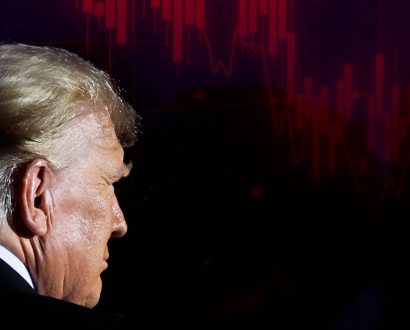The most important tool to ride out global trade policy uncertainty

Tariff uncertainty is rocking markets, reducing projected global economic growth and challenging corporate strategies. It’s forcing corporate leaders into an exhausting, uncertain cycle of reacting to fast-changing policies that have important financial and strategic considerations.
But tariffs affect more than just your bottom line. They impact relationships with employees, customers and policymakers, who need to know how you are reacting. And a big part of that is having effective communication processes that create deep trust and loyalty from key stakeholders.
That’s why your communications team needs to be part of every leadership planning meeting – to ensure that your narrative resonates, no matter the tariff outcomes.
Communications as a strategic resource
Healthy organizations strive to eliminate operational silos across departments – a challenge exacerbated by old habits of ‘staying in your lane’ and internal competition for resource prioritization. Natural cohesion is difficult when HR focuses only on employees, sales on customers and legal on regulators.
Communications is optimally situated to bridge language and operational definition gaps between corporate functions. For example, when the engineers are lauding the technical aspects of the product, we can turn their language into public-facing language for the press and social media. We also partner with sales and compliance to communicate to investors, regulators and advocates that products are not only effective but also safe.

That’s why your communications team needs to be part of every leadership planning meeting – to ensure that your narrative resonates, no matter the tariff outcomes.
In this way, communications is the one department that connects all the others, while also staying oriented to the primary concern of the entire operation: improving gross and net revenues. And most importantly, it’s entirely under your control, unlike many external factors, like whether tariffs become law or disappear entirely.
Here’s how communications can help you build trust with key stakeholder groups as the uncertainty continues.
Approaching staff and contractors
Tariffs are making stakeholders uneasy, especially in the manufacturing industry. My company is based in Japan but ships globally, including into the United States, where negotiations are currently taking place between President Donald Trump and Prime Minister Shigeru Ishiba to create streamlined, non-tariff outcomes.
It’s easy to think about how communications impact external stakeholders like customers and elected officials. But what about the people who keep the company running, whose livelihoods may be directly impacted by reduced growth and higher costs?
Tens of thousands of people in the manufacturing industry are worried about job security, whether bonuses and pay raises will be postponed because of operational cost increases, and if promotions are going to be a thing of the past.
And as any HR executive can tell you, chronic anxiety reduces work productivity, impacts company culture and leads to staff looking for companies that provide more perceived or actual security.
Many companies are running silent in the face of tariff uncertainty, which means that employees are largely getting their information from news and social media. They can see what’s happening in the macro but are uncertain about the micro – their job.
Reinforce the company’s ability to navigate past challenges – like the financial crisis or the COVID-19 pandemic – and your readiness to lead through this one, too.
Left unaddressed, the anxiety spreads quickly. In the absence of information, people invent their own narratives: rumors flourish, trust erodes and turnover increases.
That’s why my company is investing in keeping employees and partners in the know through direct interactions with our leadership team, communications from the CEO and town halls and small group discussions where workers can be heard in risk-free environments.
Just like any relationship, communication engenders trust in the organization, so an orientation toward openness will reassure people that you have a consistent drumbeat, both internal and external, about how tariffs will impact the company.
And if you do have to make tough choices, this proactive communication will ensure that everyone feels heard and cared for. Breakups aren’t easy, in work or in one’s personal life, but they’re a lot easier if everyone’s talking.
Reinforce the company’s ability to navigate past challenges – like the financial crisis or the COVID-19 pandemic – and your readiness to lead through this one, too.
Approaching investors and customers
Ultimately, none of us knows what will happen. You may not have all the answers, but you can show those who keep cash coming in that you’re out in front. This is where transparency comes in.
- What steps are you taking to lessen the impact of tariffs?
- Are you looking for alternative suppliers in less-affected regions?
- Exploring more cost-effective materials?
- Collaborating with partners to mitigate costs before passing them through?
- Cutting executive pay and bonuses before impacting labor costs lower in the company hierarchy?
No matter what your company’s specialty is, it’s crucial to help customers and stakeholders understand the steps you are taking to make reasonable adjustments. Be transparent about the impact tariffs may have on your procurement costs and how pricing reflects the market dynamics.
Show stakeholders your commitment to doing what is right and not just what is easiest.
At the same time, look for mitigation strategies that translate into digestible public-facing content. For example, it’s easy to explain how you’re now sourcing recycled materials or collaborating with suppliers to lessen input costs.
Investors will appreciate your hard work. They’ll see that, unlike the competition, you’re not flailing. Far from it – there’s a plan that you’re executing (and executing well) to mitigate risk, keep growth strong and maximize profit.
In short: Show stakeholders your commitment to doing what is right and not just what is easiest. If tariffs come to life and you are forced to push higher costs, showing the efforts you’ve taken to mitigate them will go a long way.
Create alliances with policymakers and competitors
Aligning your brand with a partisan/political side is like touching the third rail, even if all you’re doing is talking about economics. This is especially true with matters like tariffs, which many in the United States and Canada are viewing with a sense of national pride.
But running silently means missing out on the chance to influence the outcome of important policies that are going to happen, whether you’re involved or not.
The challenge here is to avoid taking brand risks, like ‘taking sides’ or being perceived as insensitive to key stakeholders. That’s why it’s important for companies to join, work with or create trade associations and industry coalitions to generate relationships, sympathy and support by going past technical tariff language and dialing in on the pain consumers, nations and industries are facing.
By sharing a unified voice and demonstrating broad business consensus, you reduce the brand risks of looking self-obsessed to the destruction of the entire industry.
These organizations often influence policy more effectively behind the scenes. They can create like-minded coalitions with groups in other industries so that policymakers and regulators see the micro and macro pictures.
Ultimately, no company can control what tariff policies will prevail. But you can control if and how you communicate about them.
These groups also allow companies to push for smart, stable trade policy without making themselves a political lightning rod. You can’t stop the tariffs or ensure their consistency, but you can be part of the policy discussions.
Association executives, their lobbyists and their communications teams are experts at finding voices outside the industry to make policy impacts. They may find small business suppliers, customers or local community leaders who can speak for your corporation to specific audiences.
Your communications team can help your company engage behind the scenes or contribute to the broader coalition. They’ll help advise when to stay quiet and when to go public, while ensuring your company’s voice is heard with the minimum possible risk.
Ultimately, no company can control what tariff policies will prevail. But you can control if and how you communicate about them – to employees, investors, customers and policymakers. Bring your communications team into the room and to the table early to help you protect trust, guard against reputational damage and lead with credibility and transparency.